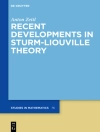This book presents original papers reflecting topics featured at the international symposium entitled “Fusion of Mathematics and Biology” and organized by the editor of the book. The symposium, held in October 2020 at Osaka University in Japan, was the core event for the final year of the research project entitled “Establishing International Research Networks of Mathematical Oncology.” The project had been carried out since April 2015 as part of the Core-to-Core Program of Japan Society for the Promotion of Science (JSPS). In this book, the editor presents collaborative research from prestigious organizations in France, the UK, and the USA. By utilizing their individual strengths and realizing the fusion of life science and mathematical science, the project achieved a combination of mathematical analysis, verification by biomedical experiments, and statistical analysis of chemical databases.
Mathematics is sometimes regarded as a universal language. It is a valuable property that everyone can understand beyond the boundaries of culture, religion, and language. This unifying force of mathematics also applies to the various fields of science. Mathematical oncology has two aspects, i.e., data science and mathematical modeling, and definitely helps in the prediction and control of biological phenomena observed in cancer evolution.
The topics addressed in this book represent several methods of applying mathematical modeling to scientific problems in the natural sciences. Furthermore, novel reviews are included that may motivate many mathematicians to become interested in biological research.
Inhaltsverzeichnis
PART 1: Mathematical Modeling: D. Guan, X. Luo, and H. Gao, Constitutive Modelling of Soft Biological Tissue from Ex Vivo to In Vivo: Myocardium as an Example.- T. Colin, T. Michel, and C. Poignard, Mathematical Modeling of Gastro-intestinal Metastasis Resistance to Tyrosine Kinase Inhibitors.- Y. Tanaka and T. Yasugi, Mathematical Modeling and Experimental Verification of the Proneural Wave.- D. Kumakura and S. Nakaoka, Exploring Similarity between Embedding Dimension of Time-series Data and Flows of an Ecological Population Model.- T. Hayashi, Mathematical Modeling for Angiogenesis.- S. Collin, Corridore and C. Poignard, Floating Potential Boundary Condition in Smooth Domains in an Electroporation Context.- N. L. Othman and T. Suzuki, Free Boundary Problem of Cell Deformation and Invasion.- L. Preziosi and M. Scianna, Multi-level Mathematical Models for Cell Migration in Confined Environments.- S. Magi, Mathematical Modeling of Cancer Signaling Addressing Tumor Heterogeneity.- N. Sfakianakis and Mark A.J. Chaplain, Mathematical Modelling of Cancer Invasion: A Review.- T. Williams, A. Wilson, and N. Sfakianakis, The First Step towards the Mathematical Understanding of the Role of Matrix Metalloproteinase-8 in Cancer Invasion.- PART II: Biological Prediction: T. Ito, T. Suzuki, and Y. Murakami, Mathematical Modeling of the Dimerization of EGFR and Erb B3 in Lung Adenocarcinoma.- H. Kubota, Selective Regulation of the Insulin-Akt Pathway by Simultaneous Processing of Blood Insulin Pattern in the Liver.- D. Oikawa, N. Hatanaka, T. Suzuki, and F. Tokunaga, Mathematical Simulation of Linear Ubiquitination in T Cell Receptor-mediated NF-κB Activation Pathway.- Y. Ito, D. Minerva, S. Tasaki, M. Yoshida, T. Suzuki, and A. Goto, Time Changes in the VEGF-A Concentration Gradient Lead Neovasculature to Engage in Stair-like Growth.- N. Hatanaka, M. Futakuchi, and T. Suzuki, Mathematical Modeling of Tumor Malignancy in Bone Microenvironment.- M. Yamamoto and Jun-ichiro Inoue, Signaling Networks Involved in the Malignant Transformation of Breast Cancer.- PART III: Data Science: R. Morishita, H. Takahashi, and T. Sawasaki, Cell-free Based Protein Array Technology.- Y. Nojima and Y. Takeda, Omics Data Analysis Tools for Biomarker Discovery and the Tutorial.- M. Oyama and H. Kozuka-Hata, Integrative Network Analysis of Cancer Cell Signaling by High-resolution Proteomics.- N. Nakamura and R. Yamada, Distance-matrix-based Extraction of Motility Features from Functionally Heterogeneous Cell Populations.- S. Kawasaki, H. Hayashi, and Y. Tominaga, Data Analytic Study of Genetic Mechanism of Ovarian Carcinoma from Single Cell RNA-seq Data.












